Caffeine in Cappuccino: How Much You’re Really Consuming
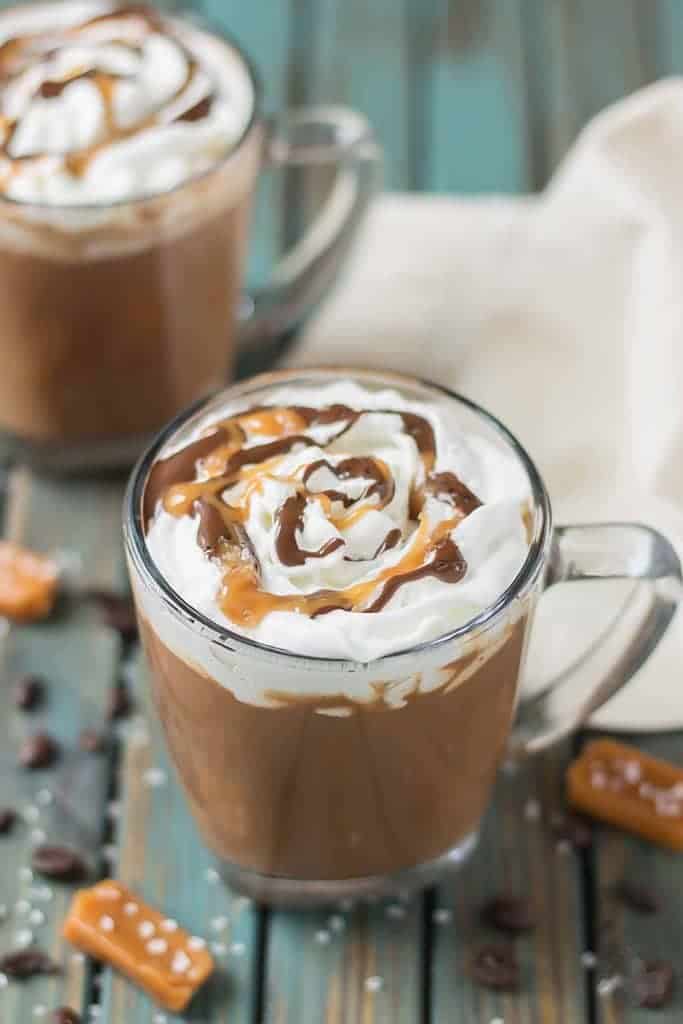
Cappuccino is a popular coffee drink that has been enjoyed by people worldwide for many years. It is a beverage made from espresso and steamed milk, topped with a layer of frothed milk. While cappuccino is a delicious and comforting drink, it also contains caffeine, a natural stimulant that can affect the body in various ways.
Understanding caffeine and its effects on the body is essential for anyone who drinks cappuccino or other caffeinated beverages.
Caffeine is a natural substance found in coffee, tea, chocolate, and some soft drinks. It is a stimulant that can increase alertness, improve mood, and enhance physical performance. However, consuming too much caffeine can cause negative side effects such as anxiety, insomnia, and increased heart rate.
Understanding Caffeine
Caffeine is a natural stimulant that is found in various foods and drinks, including coffee, tea, chocolate, and energy drinks. It is the most commonly consumed psychoactive substance in the world. Caffeine works by stimulating the central nervous system, which can increase alertness, boost energy, and improve mood. However, caffeine can also cause side effects, such as jitteriness, anxiety, and insomnia, especially in people who are sensitive to its effects.
Caffeine Sensitivity
Caffeine sensitivity varies from person to person. Some people can consume large amounts of caffeine without experiencing any adverse effects, while others may experience side effects with even small amounts of caffeine. Genetics, age, weight, and overall health can all affect how sensitive a person is to caffeine.
Caffeine Tolerance
Caffeine tolerance can develop over time with regular consumption. This means that a person may need to consume more caffeine to experience the same effects as before. However, tolerance can also lead to dependence, which can cause withdrawal symptoms when caffeine consumption is reduced or stopped suddenly.
Caffeine Strength
Caffeine strength can vary depending on the source and preparation method. For example, espresso shots used in cappuccinos can contain more caffeine than regular coffee due to the concentrated nature of the espresso. Additionally, the amount of caffeine in a cappuccino can vary depending on the number of espresso shots used and the amount of milk added.
Safe Caffeine Consumption
The US FDA recommends that adults consume no more than 400mg of caffeine per day, which is roughly equivalent to four cups of coffee. Pregnant women, children, and people with certain medical conditions may need to limit their caffeine consumption even further. It is important to be aware of the caffeine content in your drinks and to consume caffeine in moderation to avoid negative side effects.
Caffeine and Health
While moderate caffeine consumption is generally considered safe for most people, excessive caffeine consumption can have negative health effects. These can include increased heart rate, high blood pressure, and digestive issues. Additionally, consuming caffeine late in the day can interfere with sleep, which can have negative effects on overall health.
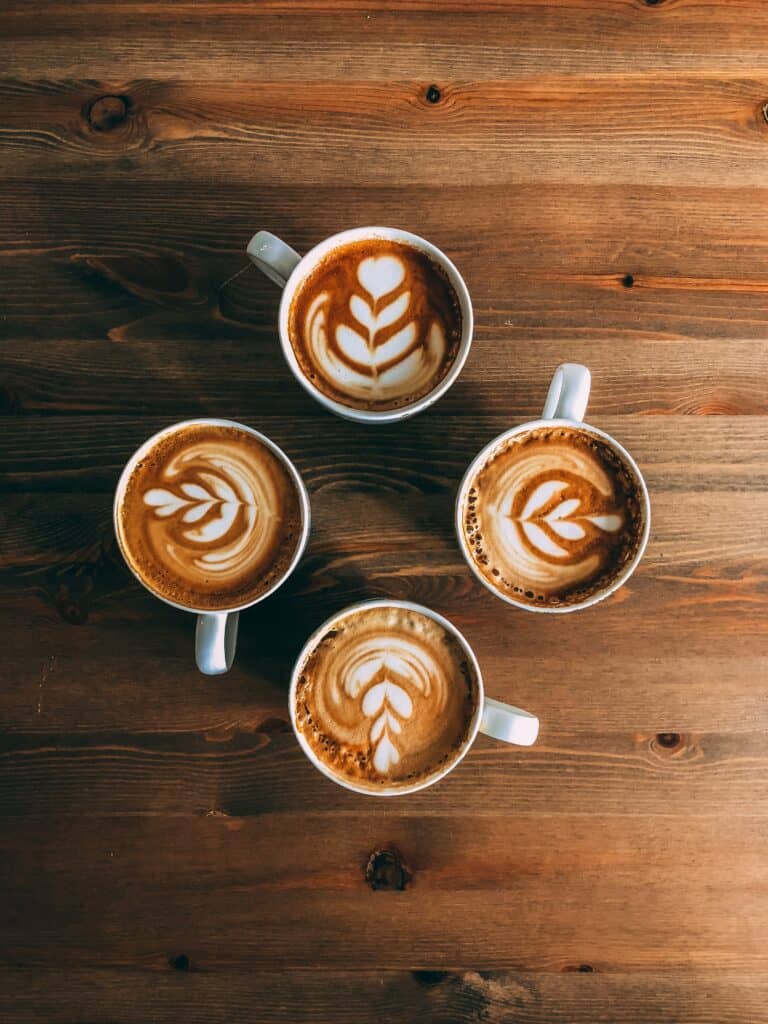
Caffeine in Different Beverages
Caffeine is a natural stimulant found in several beverages, including coffee, tea, and energy drinks. The amount of caffeine in these beverages can vary significantly. Here’s a breakdown of the caffeine content in different beverages:
Coffee
Coffee is one of the most popular sources of caffeine. The caffeine content in coffee can vary depending on the type of coffee and the brewing method. For example, a 12-ounce cup of drip coffee typically contains between 95-200mg of caffeine, while a 12-ounce cup of brewed coffee contains around 95mg of caffeine. Espresso, on the other hand, contains about 63mg of caffeine per shot.
Tea
Tea is another popular source of caffeine. The caffeine content in tea can vary depending on the type of tea and the brewing method. Black tea typically contains around 47mg of caffeine per 8-ounce cup, while green tea contains around 28mg of caffeine per 8-ounce cup.
Decaf
Decaf coffee and tea are also available for those who want to avoid caffeine. Decaf coffee typically contains around 2-5mg of caffeine per 8-ounce cup, while decaf tea contains less than 2mg of caffeine per 8-ounce cup.
Cola
Cola is a popular soft drink that contains caffeine. A 12-ounce can of cola typically contains around 34mg of caffeine.
Energy Drinks
Energy drinks are designed to provide a quick burst of energy and contain high levels of caffeine. The caffeine content in energy drinks can vary significantly, with some brands containing up to 500mg of caffeine per can. It’s important to consume energy drinks in moderation to avoid negative side effects.
Instant Coffee
Instant coffee is a popular alternative to brewed coffee. The caffeine content in instant coffee can vary depending on the brand and the serving size. A teaspoon of instant coffee typically contains around 30-90mg of caffeine.
Green Tea
Green tea is a popular alternative to black tea and contains less caffeine. A cup of green tea typically contains around 28mg of caffeine per 8-ounce cup.
In summary, the caffeine content in different beverages can vary significantly. It’s important to be aware of the caffeine content in your favorite drinks and consume them in moderation to avoid negative side effects.
Cappuccino: A Detailed Look
Cappuccino is a popular coffee beverage that is made with espresso, steamed milk, and milk foam. It is typically served in a small cup and is enjoyed by coffee lovers all over the world. In this section, we will take a detailed look at cappuccino, including its ingredients, caffeine content, and variations.
Ingredients
Cappuccino is made with three main ingredients: espresso, steamed milk, and milk foam. The ratio of these ingredients can vary depending on personal preference and the barista’s technique. A traditional cappuccino is made with equal parts espresso, steamed milk, and milk foam, while a wet cappuccino has more steamed milk and less foam. A decaf cappuccino is made with decaffeinated espresso.
Caffeine Content
Cappuccino contains caffeine due to the espresso used in its preparation. According to Art of Barista, a single shot of espresso is usually 1 to 1.25 oz in volume. Based on those numbers, if you’re using a single shot of espresso, your cappuccino has at least 64mg of caffeine. Of course, the number increases if you choose to go with a double shot of espresso. Since a cappuccino also has steamed/frothed milk, there is a lower amount of caffeine compared to an equal amount of espresso.
Variations
Cappuccino has several variations, including wet cappuccino and flat white. A wet cappuccino has more steamed milk and less foam, giving it a creamier texture. A flat white is similar to a cappuccino but has less foam and more steamed milk, resulting in a smoother and less frothy texture.
Conclusion
Cappuccino is a classic coffee beverage that has been enjoyed for generations. It is made with espresso, steamed milk, and milk foam, and can be customized to suit individual preferences. Whether you prefer a traditional cappuccino or a variation like a flat white, cappuccino is a delicious and satisfying way to enjoy your coffee.
Caffeine Content in Cappuccino
Cappuccino is a popular Italian coffee beverage that is made by combining espresso, steamed milk, and milk foam. It is a delicious drink that is enjoyed by coffee lovers all over the world. But, how much caffeine does cappuccino actually contain?
The caffeine content in cappuccino can vary depending on several factors such as the shot measurement, the strength of the coffee, and the amount of milk used. Generally, a 12-ounce cup of cappuccino made from two espresso shots has a caffeine content of around 160 mg. However, this amount can vary depending on the type of coffee used and the size of the cup.
It’s important to note that cappuccino has less caffeine compared to a regular cup of coffee. A 12-ounce cup of coffee has nearly 300mg of caffeine, whereas a cappuccino has about half of that amount. So, if you’re looking for a coffee drink with less caffeine, cappuccino is a good option.
If you’re concerned about the caffeine content in your cappuccino, you can always ask your barista to use decaf espresso shots. Decaf cappuccino has a significantly lower caffeine content, and it’s a great option for those who are sensitive to caffeine.
In summary, the caffeine content in cappuccino can vary depending on several factors, but generally, a 12-ounce cup of cappuccino made from two espresso shots has a caffeine content of around 160 mg. If you’re looking for a coffee drink with less caffeine, cappuccino is a good option. And, if you’re sensitive to caffeine, you can always opt for decaf cappuccino instead.
Coffee Beans and Caffeine Levels
Caffeine is a natural stimulant found in coffee beans. The amount of caffeine in a cappuccino depends on the type of coffee beans used, the roast level, and the brewing method. The two most common types of coffee beans are Arabica and Robusta.
Arabica beans are known for their mild and sweet flavor and are often used in high-end specialty coffees. Robusta beans, on the other hand, have a stronger and more bitter taste and are commonly used in espresso blends.
The caffeine content in Arabica beans is generally lower than Robusta beans. A 12-ounce cup of Arabica coffee contains approximately 84 milligrams of caffeine, while the same amount of Robusta coffee contains about 200 milligrams of caffeine.
The caffeine content can also vary depending on the roast level. Darker roasts tend to have less caffeine than lighter roasts. This is because the roasting process breaks down caffeine molecules, resulting in lower caffeine levels.
When it comes to ground coffee, the strength of the coffee can also affect caffeine levels. A finer grind will result in a stronger cup of coffee with higher caffeine levels, while a coarser grind will result in a weaker cup of coffee with lower caffeine levels.
Overall, the caffeine content in cappuccino can vary depending on the type of coffee beans used, the roast level, and the brewing method. It is important to note that while caffeine can have some health benefits, it can also have negative effects when consumed in excess. It is recommended to limit caffeine intake to no more than 400 milligrams per day for most adults.
Cappuccino Variations and Caffeine
Cappuccino is a popular espresso-based coffee drink that originated in Italy. It is made with a shot of espresso and steamed milk foam. However, there are many variations of cappuccino that can affect its caffeine content.
Cappuccino Variations
Cappuccino can be made with different types of milk, such as whole milk, skim milk, or almond milk. The type of milk used can affect the overall taste and texture of the cappuccino. For example, whole milk may create a richer and creamier foam than skim milk.
Another popular variation of cappuccino is the flavored cappuccino. Coffee chains like Starbucks offer a wide range of flavored cappuccinos, such as caramel cappuccino or vanilla cappuccino. These flavored cappuccinos may contain additional ingredients like syrups or chocolate powder, which can also affect the caffeine content.
Caffeine in Cappuccino
The caffeine content in cappuccino can vary depending on several factors, such as the type of coffee beans used, the size of the cappuccino, and the number of espresso shots used.
According to Caffeine Park, a single shot of espresso contains about 77mg of caffeine. Therefore, a cappuccino made with one shot of espresso would contain approximately 77mg of caffeine. However, if a double shot of espresso is used, the caffeine content would double to about 154mg.
It is important to note that the caffeine content in cappuccino is generally lower than in other coffee drinks like black coffee or lattes. For example, an 8-ounce cup of black coffee contains about 95mg of caffeine, while a 12-ounce latte contains about 75mg of caffeine.
Conclusion
In conclusion, cappuccino is a popular espresso-based coffee drink that can be made with different variations. The caffeine content in cappuccino can vary depending on several factors, but it is generally lower than in other coffee drinks. If you’re looking for a coffee drink with a lower caffeine content, cappuccino may be a good option to consider.
Measuring Caffeine Intake
When it comes to measuring caffeine intake in cappuccino, it’s important to consider the serving size and the type of coffee used. According to Mayo Clinic, an 8-ounce cup of brewed coffee typically contains between 95-165mg of caffeine, while a shot of espresso has around 63mg of caffeine.
To accurately measure the caffeine content in cappuccino, one option is to use a caffeine testing strip. As explained by Dee’s Coffee, you can pour 6 ounces of cappuccino into a cup, place a caffeine strip inside it, leave the strip for about 30 seconds, and then remove it to check the caffeine content. If your cappuccino contains more than 20mg of caffeine, your strip will highlight the C line.
Another option to measure caffeine intake is to use a coffee scale or a coffee app. By weighing the coffee beans and measuring the water used to brew the cappuccino, you can get a more accurate measurement of the caffeine content. Some coffee apps, such as CoffeeNate, allow you to track your caffeine intake by logging the type and amount of coffee you consume.
It’s important to note that the caffeine content in cappuccino can vary depending on the serving size and the type of coffee used. According to Coffee Brewster, a typical cappuccino made from two espresso shots has a caffeine content of around 160mg, while a 12-ounce cup of coffee has nearly 300mg of caffeine.
In conclusion, measuring caffeine intake in cappuccino can be done using various methods such as caffeine testing strips, coffee scales, and coffee apps. It’s important to consider the serving size and the type of coffee used to get an accurate measurement.
Caffeine and Health Considerations
Caffeine is a natural stimulant found in coffee, tea, and chocolate. Cappuccino, a popular coffee beverage, contains caffeine, which can have both positive and negative effects on health. In this section, we will examine the health considerations of caffeine in cappuccino.
Caffeine Content
A typical cappuccino contains 75-150mg of caffeine, depending on the size and strength of the coffee used. This amount of caffeine is considered moderate and safe for most healthy adults, according to the Mayo Clinic [1].
Sugar and Calories
Cappuccino often contains added sugar, which can contribute to weight gain and other health problems if consumed in excess. A 16-ounce cappuccino made with whole milk and sweetened with sugar can contain around 200 calories and 12 grams of sugar [2].
It is important to note that excessive calorie and sugar intake can lead to obesity, diabetes, and other health problems. Therefore, it is recommended to consume cappuccino in moderation and opt for unsweetened or low-sugar alternatives.
Pregnancy
Pregnant women should limit their caffeine intake to 200mg or less per day, according to the American College of Obstetricians and Gynecologists [3]. This is because high caffeine intake during pregnancy has been associated with an increased risk of miscarriage and low birth weight.
Moderation
As with any food or beverage, moderation is key when it comes to consuming cappuccino. While moderate caffeine intake has been associated with health benefits, excessive caffeine intake can cause negative effects such as anxiety, insomnia, and increased heart rate [1].
In conclusion, cappuccino can be a tasty and enjoyable beverage, but it is important to consume it in moderation and be mindful of added sugar and calorie content. Pregnant women should limit their caffeine intake, and individuals with health conditions should consult with their healthcare provider before consuming caffeinated beverages.
References
- Mayo Clinic – Caffeine: How much is too much?
- Starbucks – Cappuccino
- American College of Obstetricians and Gynecologists – Caffeine and Women’s Health
The Role of Baristas and Coffee Shops
Baristas play a crucial role in preparing cappuccinos and other coffee drinks. They are responsible for ensuring that the espresso shots are extracted properly and that the milk is steamed and frothed to the correct temperature and consistency. A skilled barista can make a cappuccino that is not only delicious but also visually appealing, with latte art designs on top.
Coffee shops also play an important role in the caffeine content of cappuccinos. The type of espresso machine used, the quality of the coffee beans, and the size of the cappuccino can all affect the amount of caffeine in the drink. Some coffee shops may use a double shot of espresso in their cappuccinos, while others may use a single shot. It is important for customers to ask about the size and strength of their cappuccino if they are concerned about their caffeine intake.
While some people may be concerned about the caffeine content of cappuccinos, it is important to remember that coffee also offers health benefits. Coffee contains antioxidants that can help protect against inflammation and disease. Cappuccinos, in particular, can be a good source of calcium if made with milk.
In summary, baristas and coffee shops play a critical role in the preparation and caffeine content of cappuccinos. It is important for customers to communicate their preferences and concerns with their barista and to choose high-quality coffee beans and espresso machines for the best possible experience.
Frequently Asked Questions
How much caffeine is in a cappuccino?
The amount of caffeine in a cappuccino depends on the size of the drink and the number of espresso shots used to make it. On average, a small 8-ounce cappuccino contains about 75 milligrams of caffeine, while a large 16-ounce cappuccino can contain up to 150 milligrams of caffeine. Keep in mind that these are just estimates and the actual caffeine content can vary.
What is the caffeine content of a cappuccino compared to other coffee drinks?
Compared to other coffee drinks, cappuccinos generally contain less caffeine. A single shot of espresso used to make a cappuccino typically contains around 63 milligrams of caffeine. In contrast, a cup of brewed coffee can contain anywhere from 95 to 200 milligrams of caffeine, depending on the type of coffee and how it’s brewed.
Are cappuccinos considered high in caffeine?
No, cappuccinos are not considered high in caffeine. While they do contain caffeine, the amount is relatively low compared to other coffee drinks. However, if you are particularly sensitive to caffeine, it’s always a good idea to check with your doctor before consuming any caffeinated beverages.
What is the difference in caffeine content between a cappuccino and a latte?
The caffeine content of a cappuccino and a latte is similar, as both drinks are made with espresso shots. However, the difference lies in the amount of milk used. A cappuccino is typically made with equal parts espresso, steamed milk, and milk foam, while a latte contains more steamed milk and less foam.
Does the amount of caffeine in a cappuccino vary depending on where it’s made?
Yes, the amount of caffeine in a cappuccino can vary depending on where it’s made. Factors such as the type of coffee bean used, the brewing method, and the size of the drink can all affect the caffeine content. Additionally, some coffee shops may use more or less espresso shots in their cappuccinos, which can also impact the caffeine content.
Which has more caffeine, a cappuccino or a latte?
The caffeine content of a cappuccino and a latte is similar, as both drinks are made with espresso shots. However, the amount of milk used in each drink can vary, which can impact the overall caffeine content. Generally, a cappuccino contains less milk than a latte, which means it may have a slightly higher caffeine content.
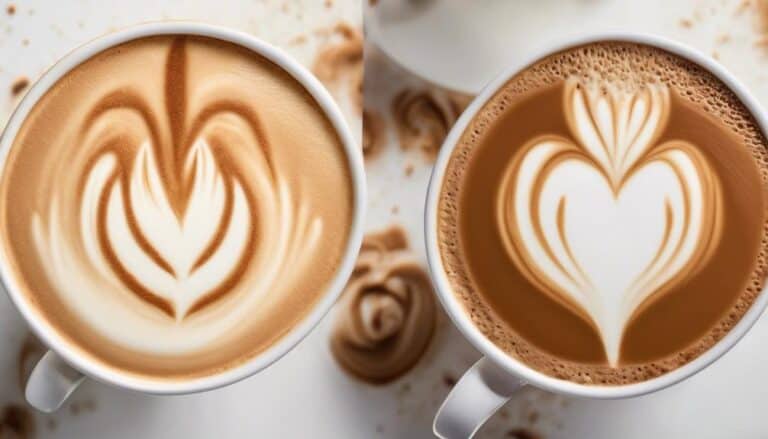
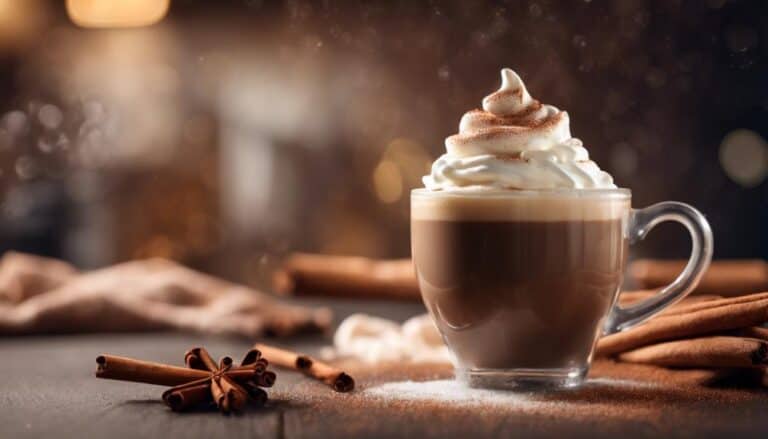

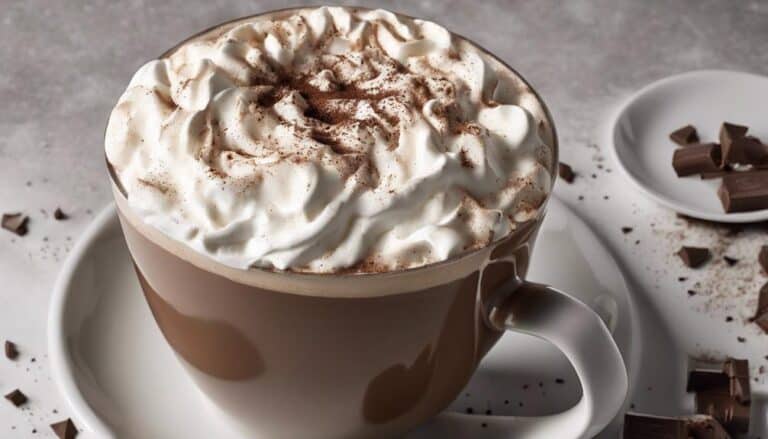
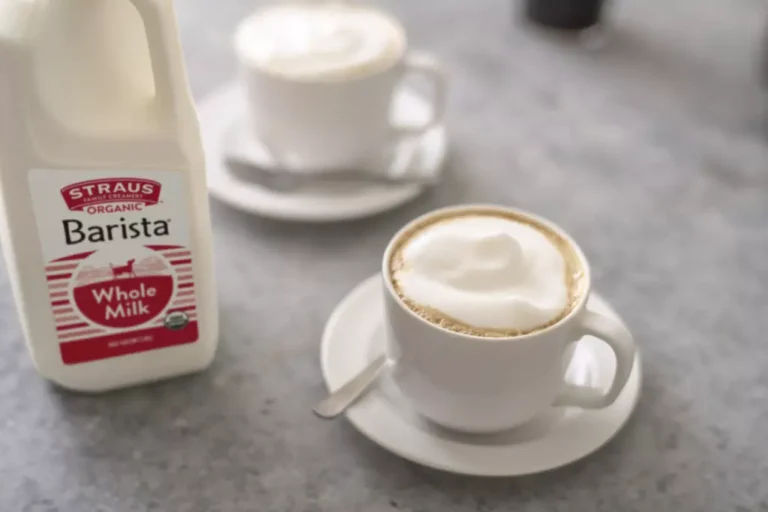
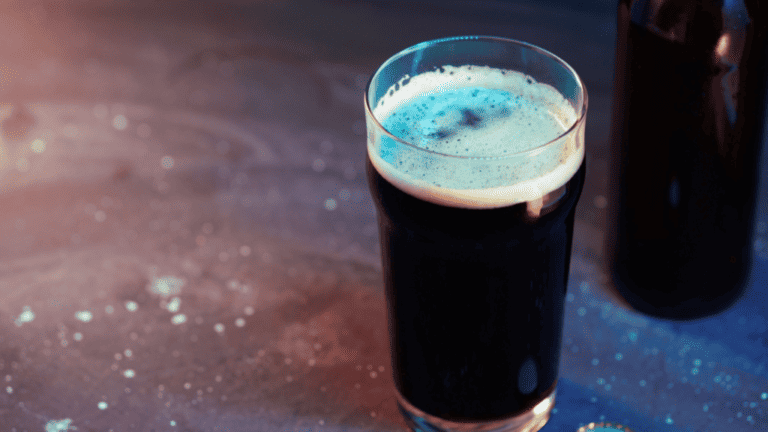
One Comment